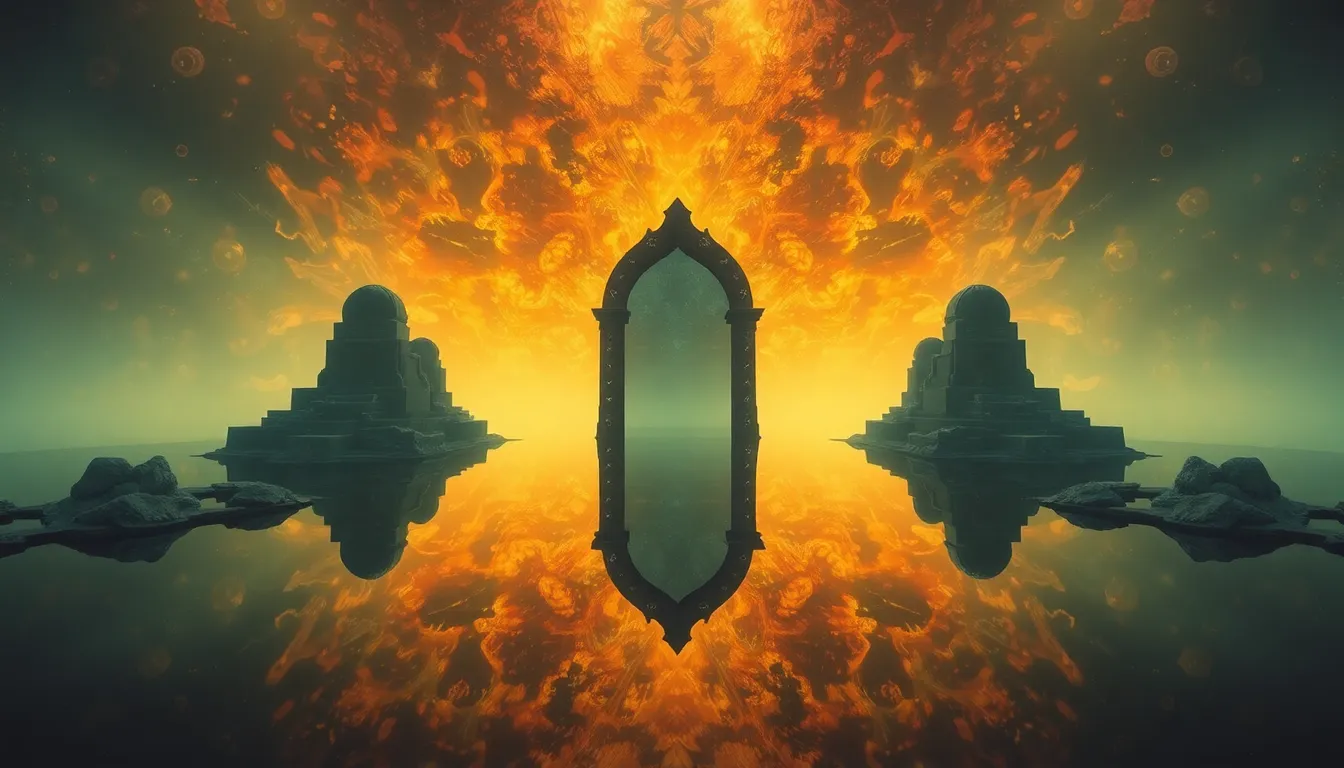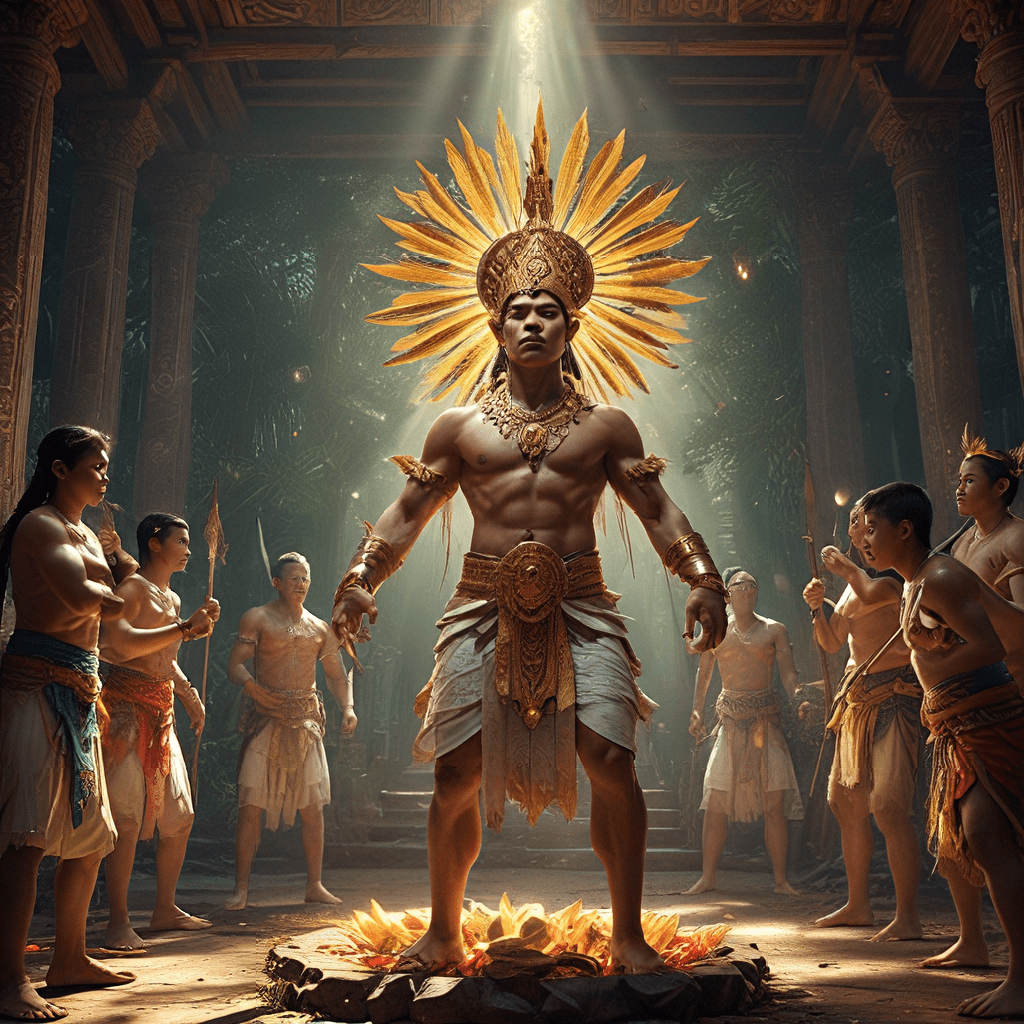Korean Folktales: Unraveling the Legend of the Divine Bow and Arrow
The divine bow and arrow, a recurring motif in Korean folktales, transcends its literal function as a weapon. It embodies powerful symbols and metaphors that have resonated with Korean culture for centuries, weaving into the fabric of their myths and legends. This powerful imagery unveils a world of divine intervention, cosmic order, and the delicate balance between the human and supernatural realms.
The Divine Bow and Arrow: A Symbol of Power and Protection
In Korean folktales, the divine bow and arrow are often associated with deities and celestial beings, representing immense power and protective strength. These arrows are not merely physical projectiles but imbued with celestial energy, capable of warding off evil, vanquishing demons, and safeguarding the innocent. The archer, usually a god or a powerful spirit, becomes a symbol of divine intervention, a protector of the righteous and a defender against forces of chaos.
One of the most famous examples is the tale of the Hwangun (Yellow Emperor), a legendary figure who is said to have descended from heaven to rule Korea. Hwangun brought with him celestial artifacts, including a divine bow and arrow, which he used to establish peace and order in the land. The bow and arrow, in this instance, represent the divine authority vested in Hwangun, the power he wielded to protect and guide his people.
The Divine Bow and Arrow: A Tool of Justice and Vengeance
The divine bow and arrow is not only a symbol of protection but also a powerful tool for dispensing justice and retribution. It becomes a weapon of righteous anger, wielded by deities or spirits to punish the wicked and restore balance to the world. The arrow, when launched, carries the weight of divine judgment, ensuring that wrongdoing is met with its due consequence.
In many tales, the divine bow and arrow is used to punish individuals who have committed transgressions against the natural order or societal laws. For example, a spirit might use the bow to inflict illness or misfortune upon those who have broken taboos, reminding them of the consequences of their actions. This element of justice serves as a moral compass within the folktales, reinforcing the importance of upholding ethical standards and respecting the natural world.
The Divine Bow and Arrow: A Representation of Cosmic Order
Beyond its role as a weapon, the divine bow and arrow also symbolizes the cosmic order, the delicate balance that governs the universe. The act of shooting an arrow, in these tales, represents the power of divine intervention to restore harmony and order whenever it is disrupted. The arrow itself becomes a metaphor for the interconnectedness of all things, demonstrating how even seemingly small actions can ripple through the cosmos and affect the natural order.
The archer, in this context, embodies the cosmic force that maintains balance, ensuring that the universe doesn’t succumb to chaos. The divine bow and arrow, therefore, serves as a reminder of the harmony that underpins the world, encouraging individuals to live in accordance with its natural laws.
The Origins of the Divine Bow and Arrow: Myths and Legends
The origin of the divine bow and arrow in Korean folktales is often shrouded in myth and legend. Some tales attribute the bow to a celestial being, perhaps a deity or a powerful spirit, who forged it from celestial materials. Others suggest that it was gifted to humans by the gods as a symbol of their power and protection.
In the myth of Dangun, the legendary founder of Korea, the divine bow and arrow plays a significant role. Dangun, a descendant of a celestial being, is said to have inherited the bow and arrow from his ancestor. This powerful weapon symbolized his divine lineage and the authority he wielded as the first ruler of Korea.
The Divine Bow and Arrow: A Weapon of the Gods and Spirits
In Korean mythology, the divine bow and arrow is primarily a weapon associated with deities and spirits, who use it to protect the righteous, punish the wicked, and maintain cosmic order. These figures often use the bow and arrow to demonstrate their divine power and influence, emphasizing their role in shaping the world and the lives of humans.
The divine bow and arrow possesses supernatural abilities, transcending the limitations of ordinary weapons. It can travel vast distances, pierce through any obstacle, and inflict supernatural harm upon its target. This aspect of the divine bow underscores its connection to the supernatural realm, showcasing the power and authority of the deities and spirits who wield it.
The Divine Bow and Arrow: A Link to the Supernatural World
In Korean folktales, the divine bow and arrow is more than just a weapon; it acts as a bridge between the human world and the supernatural realm. The use of the bow by deities and spirits emphasizes the close connection between these two worlds and the constant interplay between them. The arrows themselves can be seen as messengers of the divine, carrying messages and divine will from the supernatural world to the human one.
For example, in some tales, a spirit might use the divine bow to send a message to a human, urging them to take a certain action or warning them of impending danger. This emphasizes the ability of the divine to interact with humans in a tangible and direct way, utilizing the divine bow as a conduit for their power and influence.
The presence of this powerful weapon in the human world highlights the constant influence of the supernatural on human lives, reminding us that even mundane actions or events could be influenced by forces beyond our comprehension.
The Divine Bow and Arrow: A Symbol of Royal Authority
In Korean mythology, the divine bow and arrow also symbolizes royal authority and the legitimacy of the rulers. Many stories depict the rulers possessing or inheriting the divine bow and arrow, signifying their divine mandate to rule and their connection to the supernatural realm. The bow, in this context, becomes a sacred artifact, representing the power and legitimacy vested in the ruler.
The legend of Dangun, the first king of Korea, provides a powerful example. Dangun, descended from a celestial being, inherits the divine bow and arrow from his ancestor, symbolizing his divine lineage and the legitimacy of his rule. This association with royalty reinforces the divine nature of the ruler and their connection to the cosmic order, cementing their position and authority within the kingdom.
The divine bow, in this regard, serves a larger purpose than just a weapon. It embodies the ruler's responsibility to protect their people, maintain order, and ensure the welfare of their kingdom, representing a divine contract between the ruler and the people.
Theories on the Origins of the Divine Bow and Arrow Myth
The prevalence of the divine bow and arrow in Korean folktales raises questions about its origins and significance. Different theories attempt to explain the persistence of this motif, exploring its potential roots and cultural influences.
One theory suggests that the divine bow and arrow could have originated from the ancient practice of shamanism. Shamanism, a form of spiritual practice, involves communicating with the spirit world, seeking guidance and protection from spirits and deities. The bow and arrow, in this context, could have symbolized the shamans' ability to connect with the supernatural realm and harness its power.
Another theory links the myth to the importance of archery in Korean culture. Historically, archery was considered a crucial skill, essential for hunting, warfare, and even ritual practices. This practical application of archery could have led to its elevation to a symbolic level, associating it with divine power and protection.
These theories suggest that the myth of the divine bow and arrow reflects a complex interplay of spiritual beliefs, cultural practices, and historical context, providing insights into the worldview and cultural values of the Korean people.
The Influence of Shamanistic Practices on the Bow and Arrow Myth
Shamanism, a spiritual practice prevalent in Korea, plays a significant role in shaping the myth of the divine bow and arrow. Shamanistic beliefs emphasize the importance of communicating with the spirit world and seeking their guidance and protection.
Shamanistic rituals often involved the use of various tools, including the bow and arrow, to connect with the spirit world and harness their power. The bow and arrow, therefore, became symbolic extensions of the shamans' spiritual abilities, representing their ability to access and channel divine energy.
The use of the bow and arrow in shamanistic practices could have influenced its association with deities and spirits in Korean folklore. The bow and arrow, when wielded by celestial beings, embodies the power and authority of the supernatural realm, reflecting the shamans' belief in the interconnectedness of the human and divine worlds.
The influence of shamanistic practices also explains the association of the divine bow and arrow with healing and protection. Shamans often used the bow and arrow in their rituals to ward off evil spirits and protect their clients from harm. This practical application of the bow and arrow in shamanistic healing further cemented its connection with divine power and protection in Korean folklore.
FAQ
What is the significance of the divine bow and arrow in Korean folktales?
The divine bow and arrow is a powerful symbol in Korean folktales, representing power, protection, justice, and cosmic order. It often embodies the divine intervention of deities and spirits, their ability to influence the world and human lives.
How does the divine bow and arrow link the human and supernatural realms?
The bow and arrow serve as a bridge between the human and supernatural realms, highlighting the constant influence of deities and spirits on human lives. It acts as a conduit for divine messages and power, reminding us of the delicate balance between the two worlds.
What is the significance of the divine bow and arrow in the context of Korean royalty?
The divine bow and arrow symbolizes royal authority, representing the ruler's connection to the supernatural realm and their divine mandate to rule. It reflects the ruler's responsibility to protect their people, maintain order, and ensure the welfare of their kingdom.
What are some theories about the origins of the divine bow and arrow myth?
Theories suggest that the myth could have originated from ancient shamanistic practices, where the bow and arrow were used as tools to connect with the spirit world. Another theory links it to the importance of archery in Korean culture, highlighting its practical and symbolic significance.
How does shamanistic practice influence the myth of the divine bow and arrow?
Shamanistic beliefs and practices heavily influence the association of the bow and arrow with divine power, protection, and healing. The bow and arrow, as a tool used in shamanistic rituals, reflects the shamans' ability to access and channel supernatural energy, contributing to its symbolic significance in Korean folktales.




